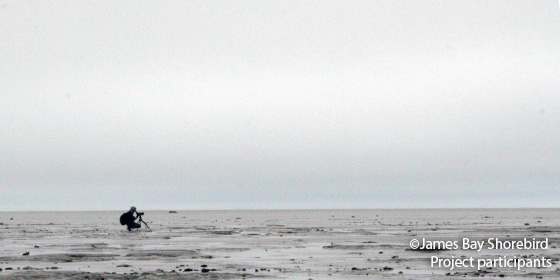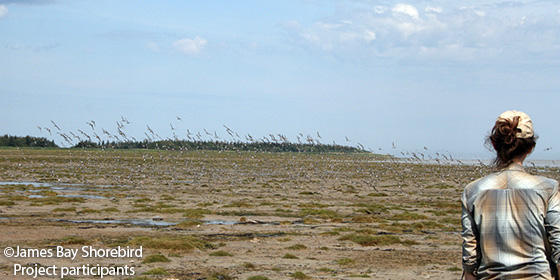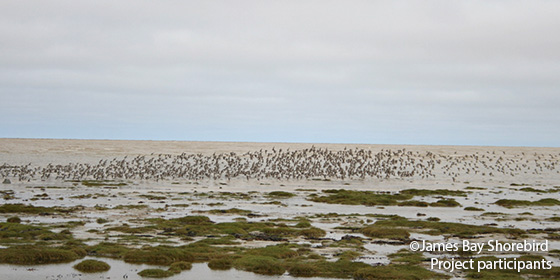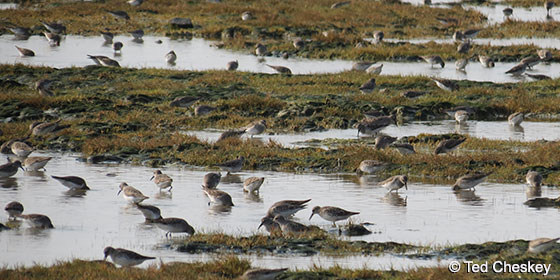Linking Sites, Linking Communities
Atlantic Flyway Exchange
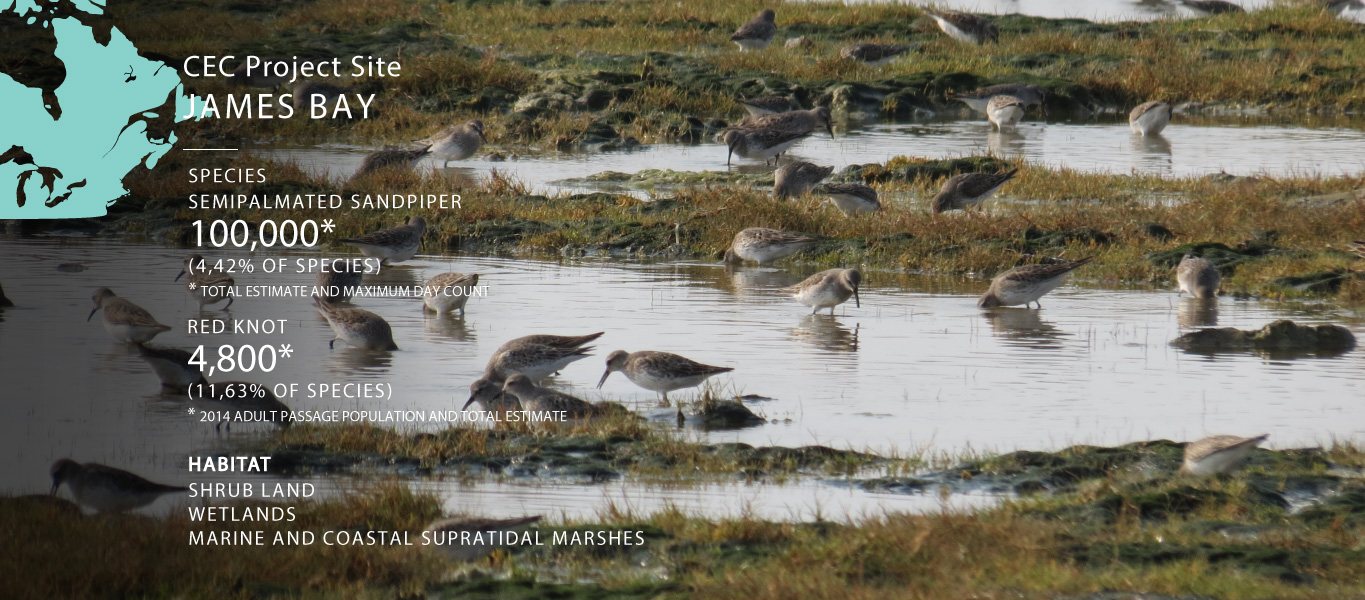
Ontario, Canada
The aim at this project site was to establish a Western Hemisphere Shorebird Reserve Network (WHSRN) Site of Hemispheric Importance along the southern James Bay coast within the declared homelands of the Moose Cree First Nation (MCFN).
For 75 years, naturalists have been aware of the significance of the southern James Bay coastline for migrating shorebirds. During fall migration, this area supports from five to over 20 percent of the populations of several shorebird species, including the endangered rufa Red Knot.
Local Partners
Through this project, local partners brought key MCFN and adjacent First Nations together with federal government and WHSRN staff to initiate WHSRN nomination planning for the site. One requirement for the WHSRN nomination is endorsement by the “site owner,” in this case the MCFN. A key milestone toward WHSRN designation was the MCFN Band Council Resolution (BCR) in support of establishing the WHSRN site. Nomination papers and the BCR were submitted to the WHSRN Hemispheric Council in April 2017.
Education and Outreach
Shorebird conservation education and outreach material for the Moose Cree and other First Nations along the coast were also created, including the comic book “A Year in the Life of a Red Knot,” the short video “Great Travellers in the Homelands of the James Bay Cree,” and the infographic “The rufa Red Knot – A Great Traveller of the Americas.” Lastly, two MCFN site representatives traveled to Delaware Bay, United States, for one week in May 2017, to participate in a bird-banding event where trained volunteers caught, measured, tagged, banded and released shorebirds. The data collected will serve to inform shorebird conservation actions.
Photo Gallery
Partners
Sites in this Exchange
James Bay
Ontario, Canada
The aim at this project site was to establish a Western Hemisphere Shorebird Reserve Network (WHSRN) Site of Hemispheric Importance along the southern James […]
Bay of Fundy
New Brunswick and Nova Scotia, Canada
The food-rich mudflats of the Bay of Fundy annually support nearly 30% of the world’s population of Semipalmated Sandpipers, in […]
Delaware Bay
Delaware and New Jersey, USA
In May, hundreds of thousands of shorebirds stop at Delaware Bay to rest and to refuel on horseshoe crab eggs before their long journey to the Arctic[…]
Georgia Barrier Coast
Georgia, USA
A series of islands along Georgia’s 160-km (100-mile) coast provides critical foraging, resting and wintering habitat for over 20 species of shorebirds[…]

Produced with support from the Commission for Environmental Cooperation – www.cec.org
The Commission for Environmental Cooperation (CEC) is an intergovernmental organization that supports the cooperative environmental agenda of Canada, Mexico and the United States to green North America’s economy, address climate change by promoting a low-carbon economy, and protect North America’s environment and the health of its citizens.
To foster North American conservation opportunities for Semipalmated Sandpipers (Calidris pusilla) and Red Knots (Calidris canutus—rufa and roselaari subspecies), the Commission for Environmental Cooperation (CEC) started an initiative to inform, engage and connect communities at key sites for these two species. This included linking sites in the Pacific flyway and the Atlantic flyway.




